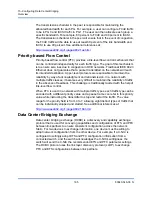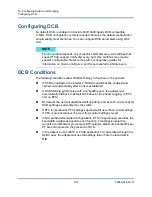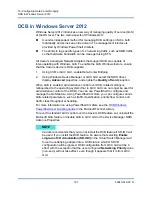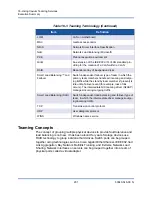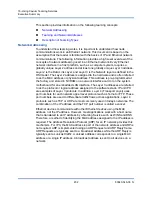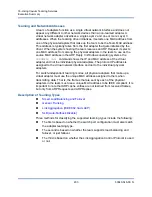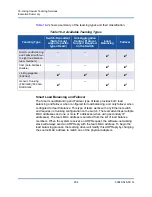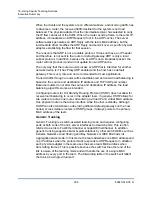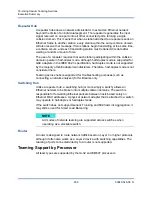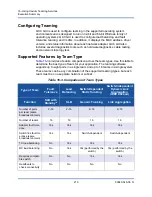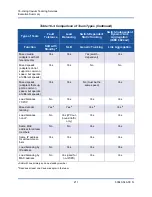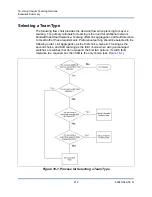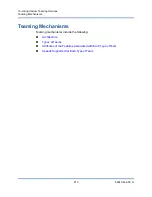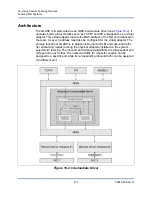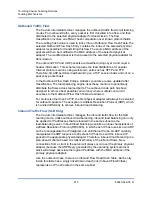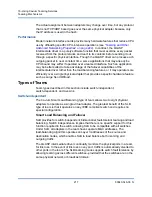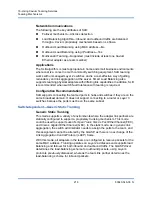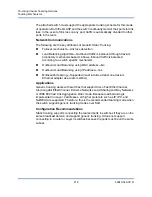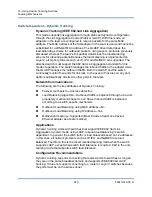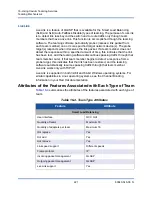
16–Using Cavium Teaming Services
Executive Summary
208
83840-546-00 N
SLB (Auto-Fallback Disable)
This type of team is identical to the Smart Load Balance and Failover type of
team, with the following exception: when the standby member is active, if a
primary member comes back on line, the team continues using the standby
member rather than switching back to the primary member. This team type is
supported only for situations in which the network cable is disconnected and
reconnected to the network adapter. It is not supported for situations in which the
adapter is removed or installed through Device Manager or Hot-Plug PCI.
If any primary adapter assigned to a team is disabled, the team functions as a
Smart Load Balancing and Failover type of team in which auto-fallback occurs.
Software Components
Teaming is implemented through an NDIS intermediate driver in the Windows
operating system environment. This software component works with the miniport
driver, the NDIS layer, and the protocol stack to enable the teaming architecture
(see
). The miniport driver controls the host LAN
controller directly to enable functions such as sends, receives, and interrupt
processing. The intermediate driver fits between the miniport driver and the
protocol layer multiplexing several miniport driver instances, and creating a virtual
adapter that looks like a single adapter to the NDIS layer. NDIS provides a set of
library functions to enable the communications between either miniport drivers or
intermediate drivers and the protocol stack. The protocol stack implements IP, IPX
and ARP. A protocol address such as an IP address is assigned to each miniport
device instance, but when an intermediate driver is installed, the protocol address
is assigned to the virtual team adapter and not to the individual miniport devices
that make up the team.
Hardware Requirements
Hardware requirements for teaming include:
The various teaming modes described in this document place specific restrictions
on the networking equipment used to connect clients to teamed systems. Each
type of network interconnect technology has an effect on teaming as described in
the following sections.


